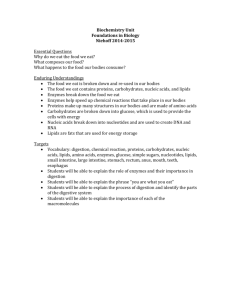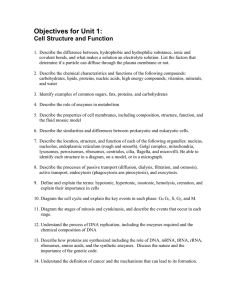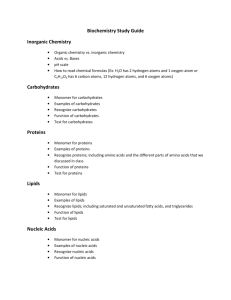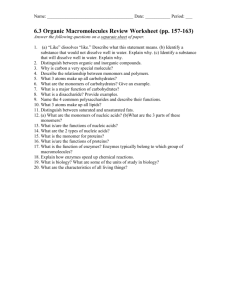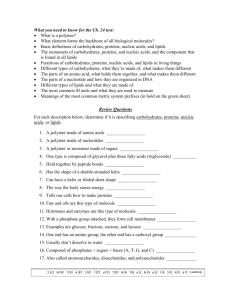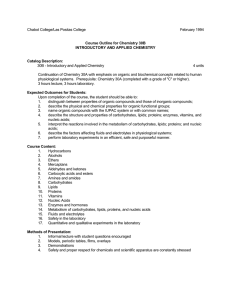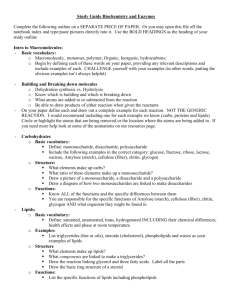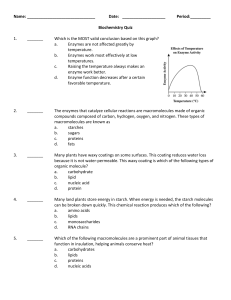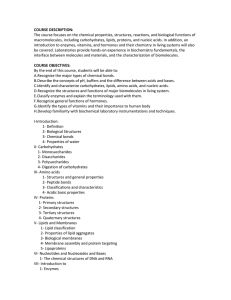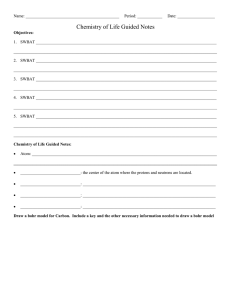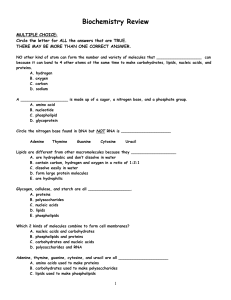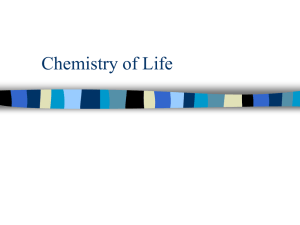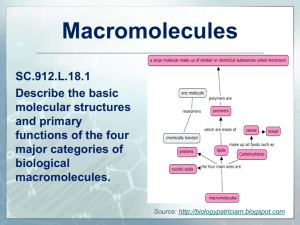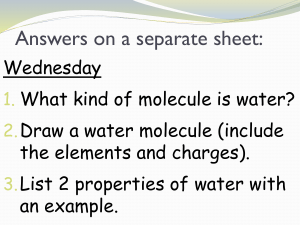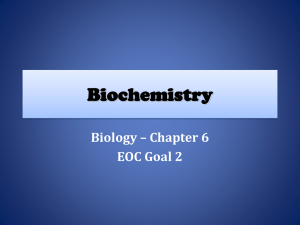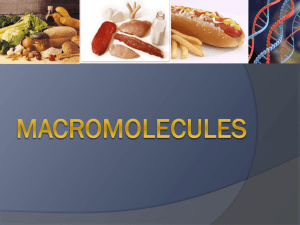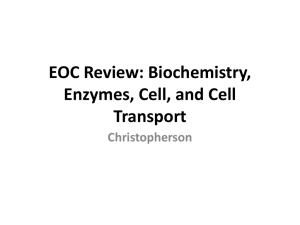Unit 2
advertisement
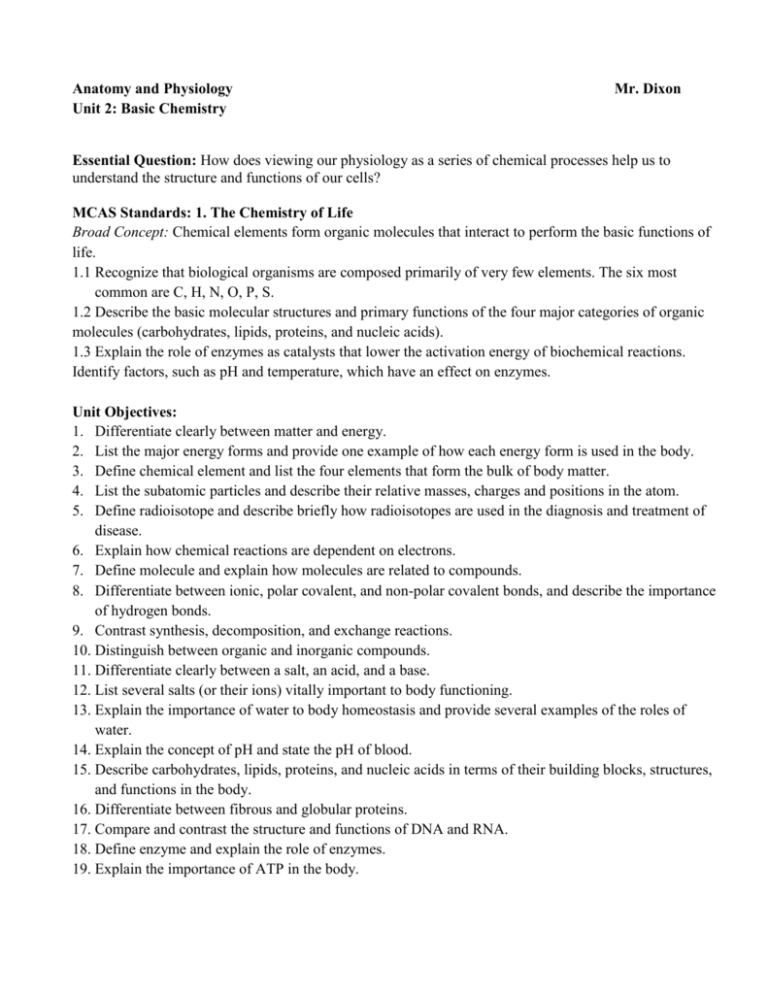
Anatomy and Physiology Unit 2: Basic Chemistry Mr. Dixon Essential Question: How does viewing our physiology as a series of chemical processes help us to understand the structure and functions of our cells? MCAS Standards: 1. The Chemistry of Life Broad Concept: Chemical elements form organic molecules that interact to perform the basic functions of life. 1.1 Recognize that biological organisms are composed primarily of very few elements. The six most common are C, H, N, O, P, S. 1.2 Describe the basic molecular structures and primary functions of the four major categories of organic molecules (carbohydrates, lipids, proteins, and nucleic acids). 1.3 Explain the role of enzymes as catalysts that lower the activation energy of biochemical reactions. Identify factors, such as pH and temperature, which have an effect on enzymes. Unit Objectives: 1. Differentiate clearly between matter and energy. 2. List the major energy forms and provide one example of how each energy form is used in the body. 3. Define chemical element and list the four elements that form the bulk of body matter. 4. List the subatomic particles and describe their relative masses, charges and positions in the atom. 5. Define radioisotope and describe briefly how radioisotopes are used in the diagnosis and treatment of disease. 6. Explain how chemical reactions are dependent on electrons. 7. Define molecule and explain how molecules are related to compounds. 8. Differentiate between ionic, polar covalent, and non-polar covalent bonds, and describe the importance of hydrogen bonds. 9. Contrast synthesis, decomposition, and exchange reactions. 10. Distinguish between organic and inorganic compounds. 11. Differentiate clearly between a salt, an acid, and a base. 12. List several salts (or their ions) vitally important to body functioning. 13. Explain the importance of water to body homeostasis and provide several examples of the roles of water. 14. Explain the concept of pH and state the pH of blood. 15. Describe carbohydrates, lipids, proteins, and nucleic acids in terms of their building blocks, structures, and functions in the body. 16. Differentiate between fibrous and globular proteins. 17. Compare and contrast the structure and functions of DNA and RNA. 18. Define enzyme and explain the role of enzymes. 19. Explain the importance of ATP in the body. Unit Plan Day Activity 1 Energy Drink Case Study Homework Objectives 1-5 2 Energy Drink Case Study Finish Case 3 Atomic structure and function Objectives 6-9 4 Chemical Reactions Objectives 10-14 5 Water Chemistry and life Objectives 15-17 6 Carbohydrates and lipids Objectives 18-19 7 Proteins and Nucleic acids Study 8 Enzymes Study 9 Molecular models lab Review for test Unit exam Study 10 Assessments: Assignments Objectives TBA Points 40 Energy Drink Case 25 Molecular Models lab 10 Unit test 100 Total 175 Score
